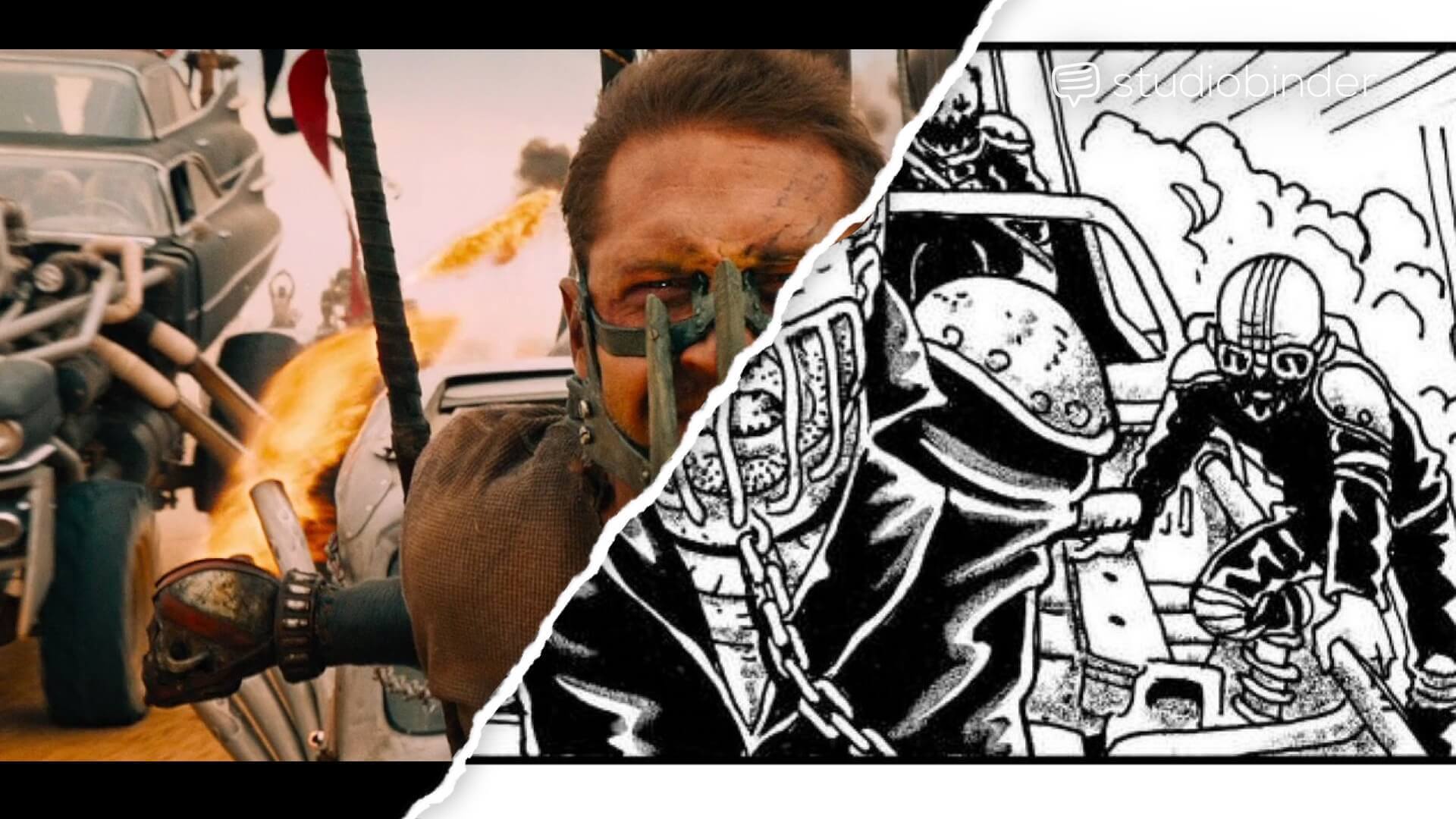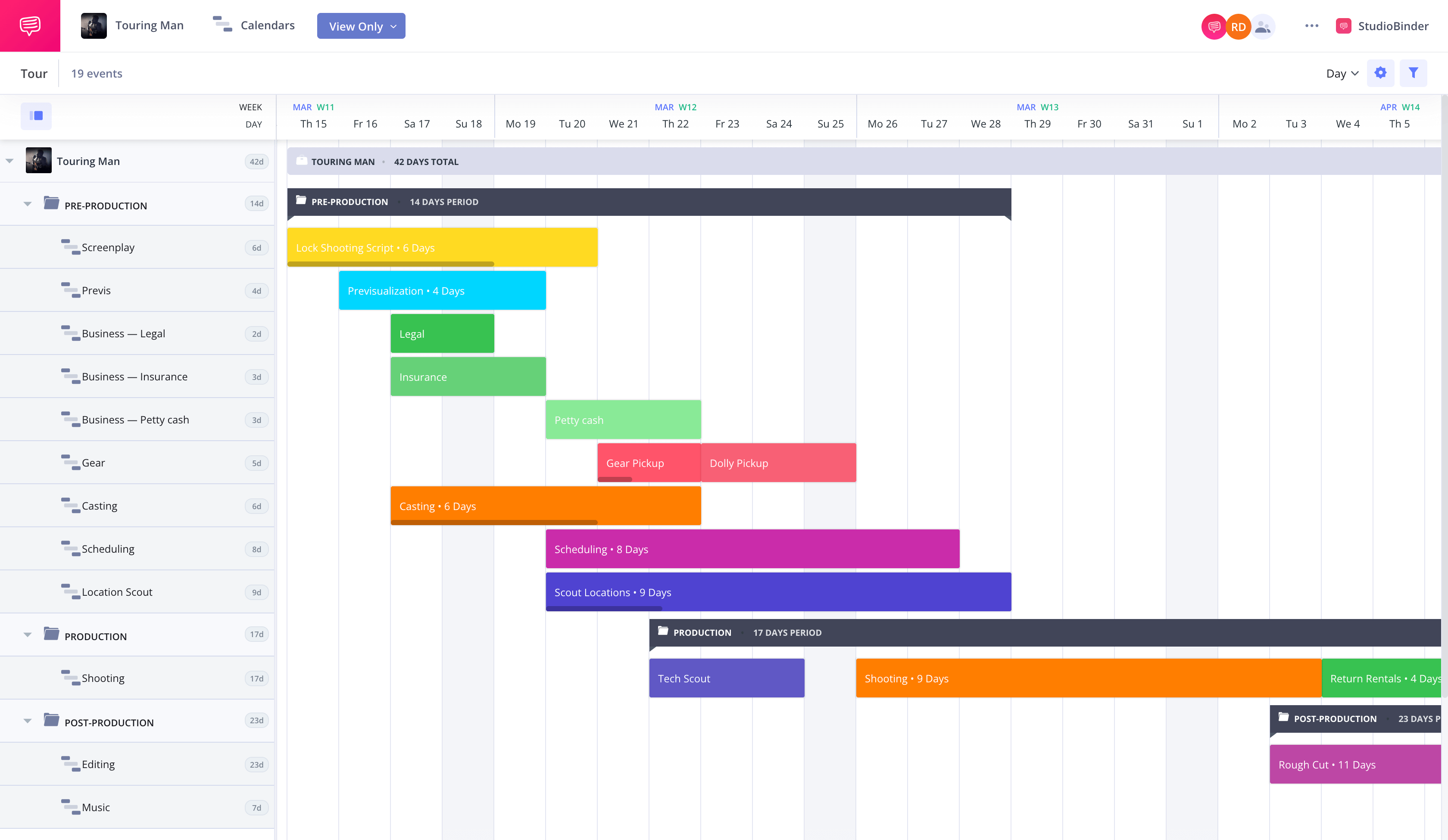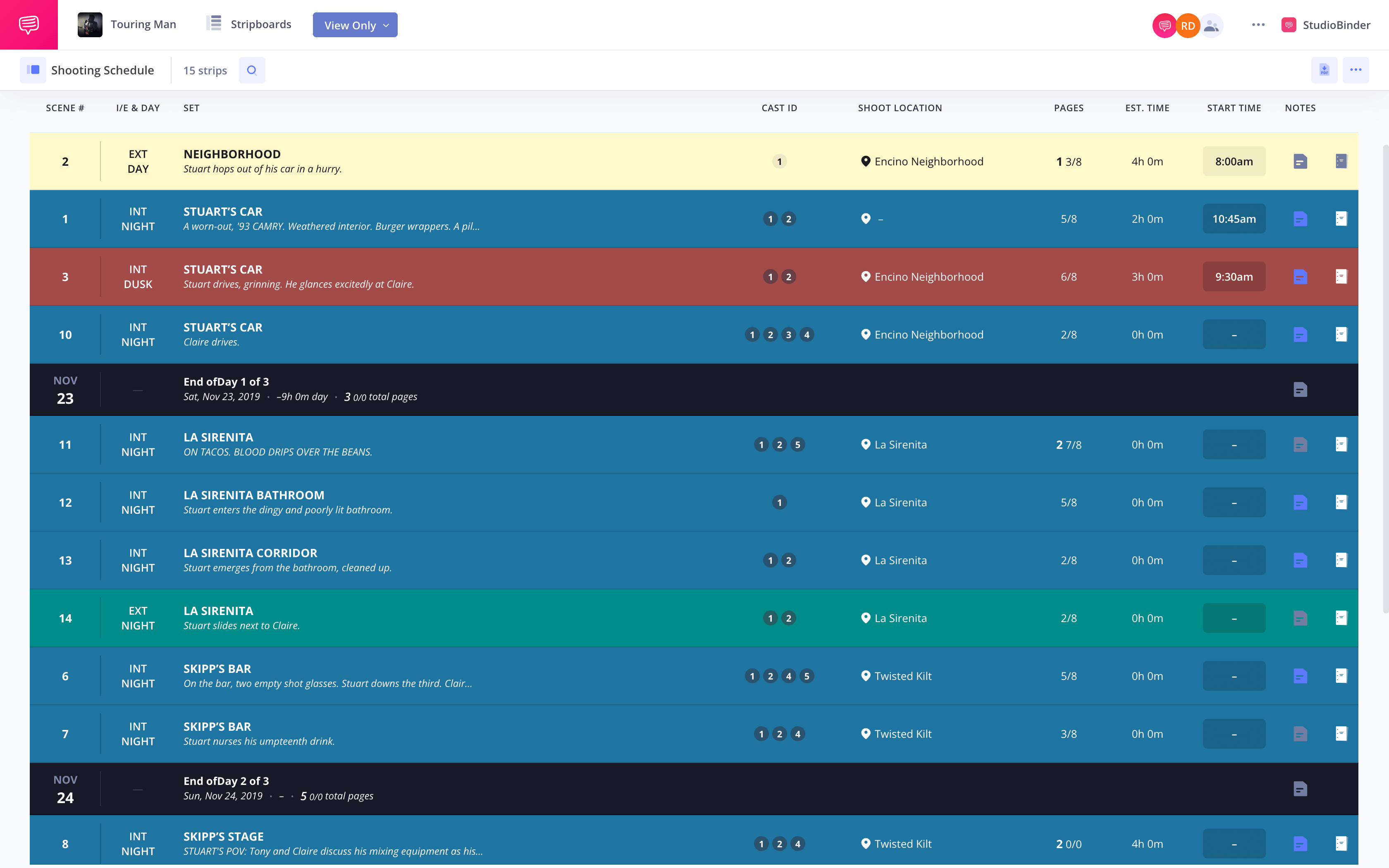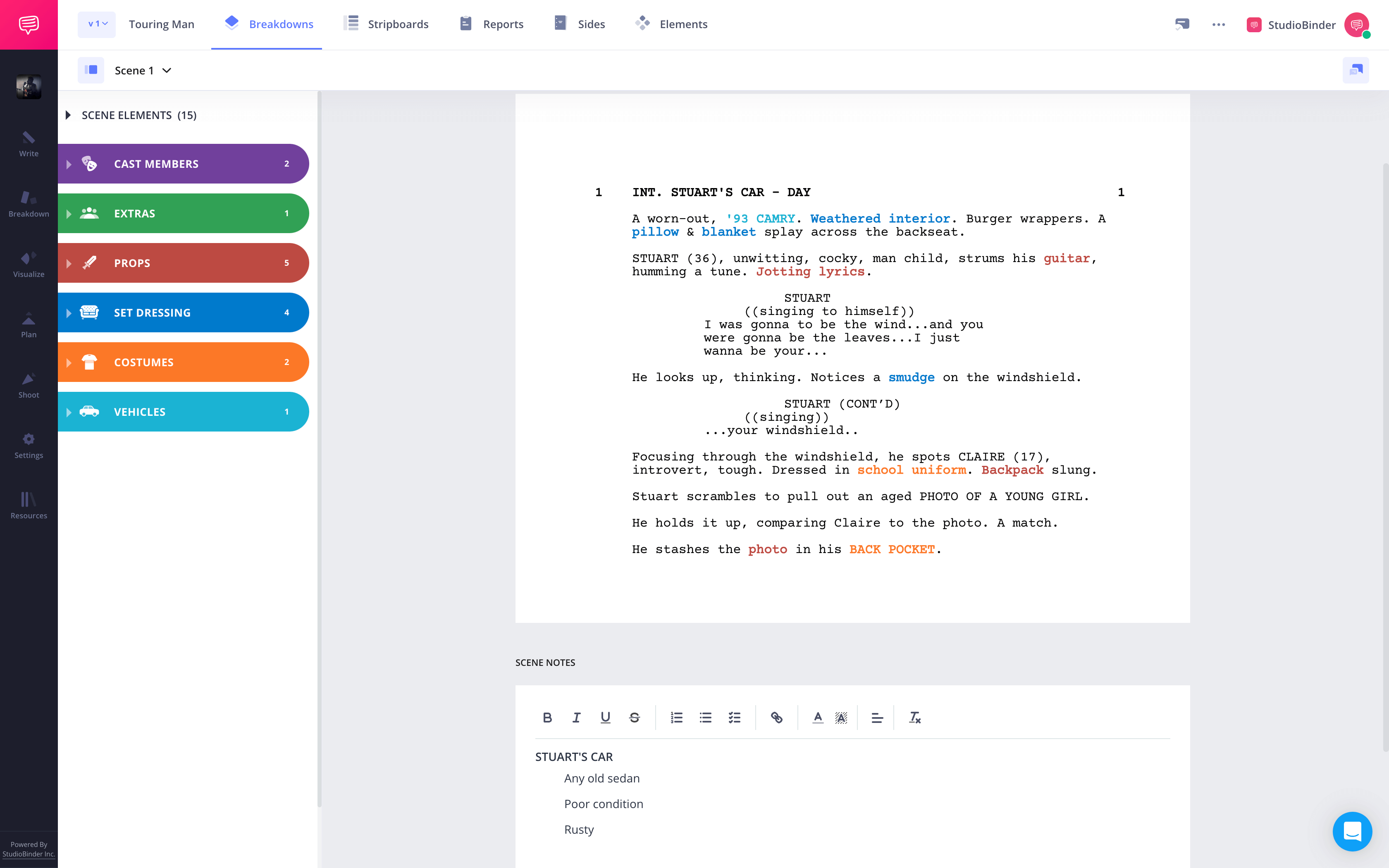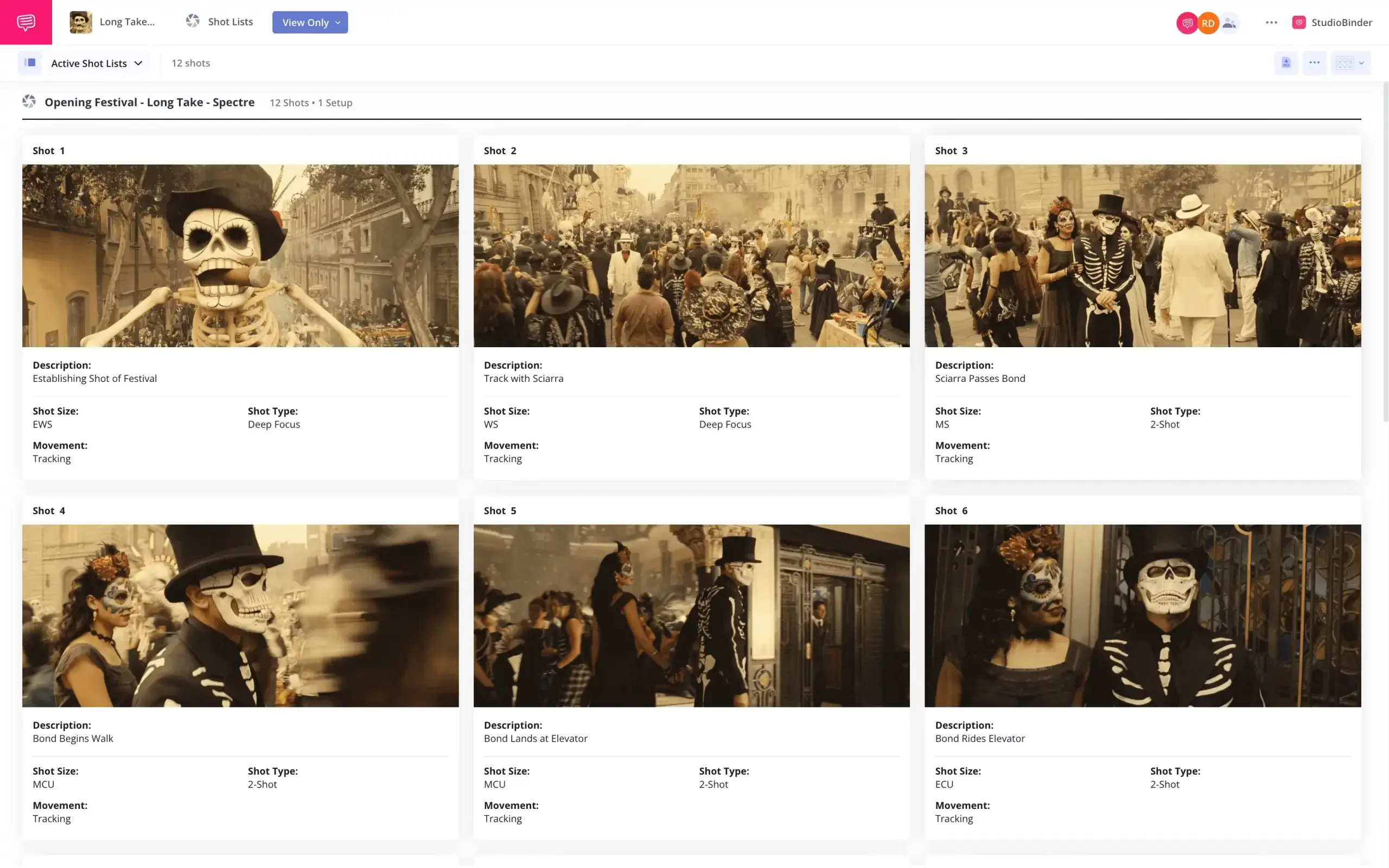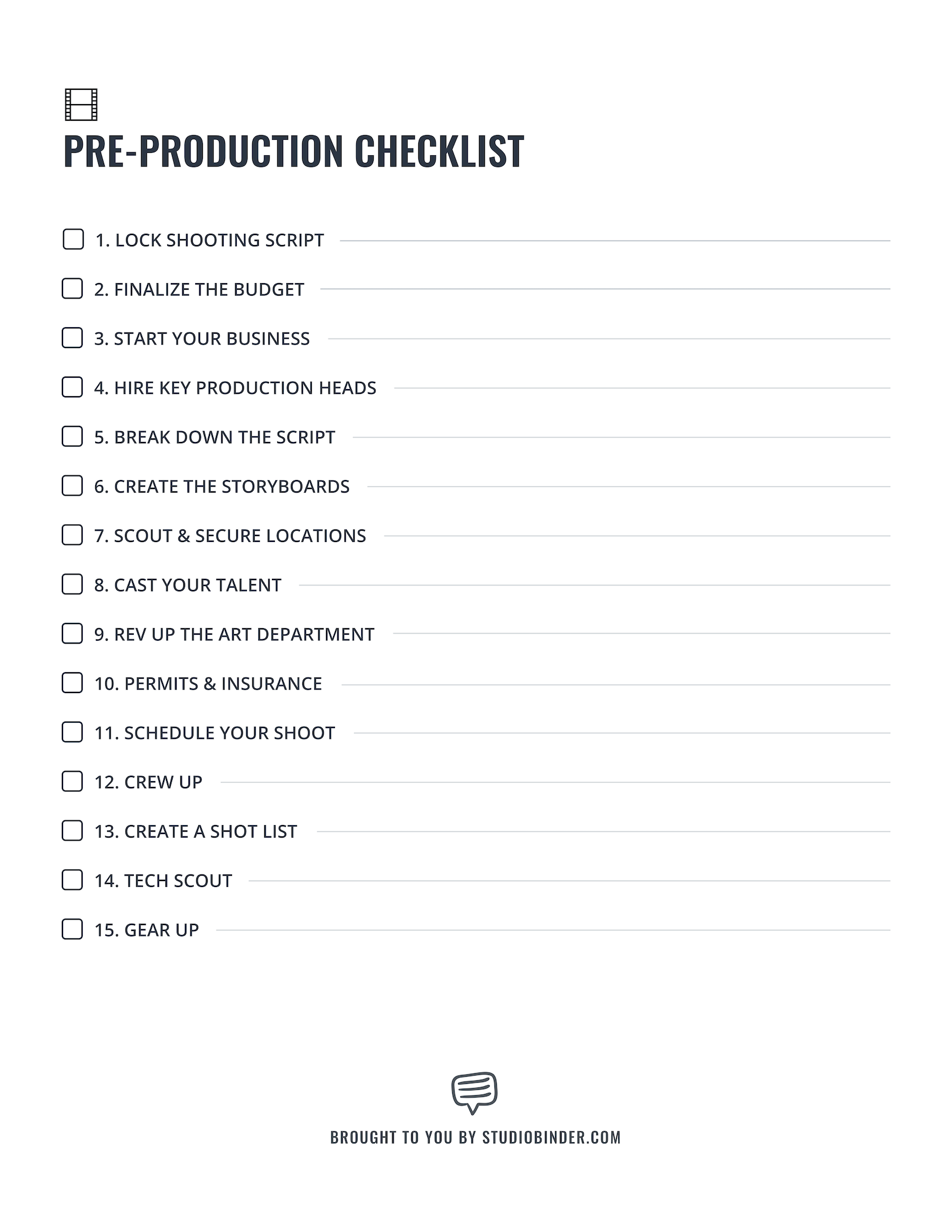Pre-Production can be overwhelming even for the seasoned producer. It requires knowledge of many facets of production, as well as an ability to prevent potential crises down the line. It’s not always easy but if you stay organized, it’s pretty simple. So what is Pre-Production in film? When does it start and when does it end? This post will answer those questions and will give a quick rundown.
Stages of Production
The stages of film production
The filmmaking process takes place in distinct phases: development, financing, pre-production, production and post-production. Once the film is complete, it enters stages dedicated to marketing, distribution, and exhibition.
So, what is pre production?
Pre-Production is an early stage of any project, including but not limited to creating storyboard commercials, music videos, short films, and feature films. This crucial step defines how efficient, organized and, ultimately, how successful the production stage will be.
Let's define Pre-Production and then we'll get into more detail on the timelines and the necessary steps involved.
PRE-PRODUCTION DEFINITION
What is Pre-Production in film?
Pre-Production is the planning process and execution of every task that must take place before production begins. It usually begins once the script is finished and involves the director, cinematographer, producers, first assistant director, production managers, production coordinators, and location scouts. Every project is different depending on the budget and the size of the production, but there are some relatively universal guidelines to consider.
Pre-Production Steps:
- Form a new company (not always applicable)
- Lock the shooting script
- Break down the script
- Hire key department heads
- Finalize the budget
- Storyboard and shot list the scenes
- Scout and secure locations
- Cast actors and hire crew
- Get permits and insurance
- Schedule shoot days
- Perform a tech scout
- Arrange for equipment rentals
Pre-Production TIMELINE
When does Pre-Production start?
Pre-Production immediately follows the "development stage," where the script is worked into a viable final draft. As soon as the screenplay is "locked," the process can begin in earnest.
Below is a diagram of a basic Pre-Production workflow. Every project is different but this order of operations can apply to any type of production, including short films, music videos, commercials, or feature films.
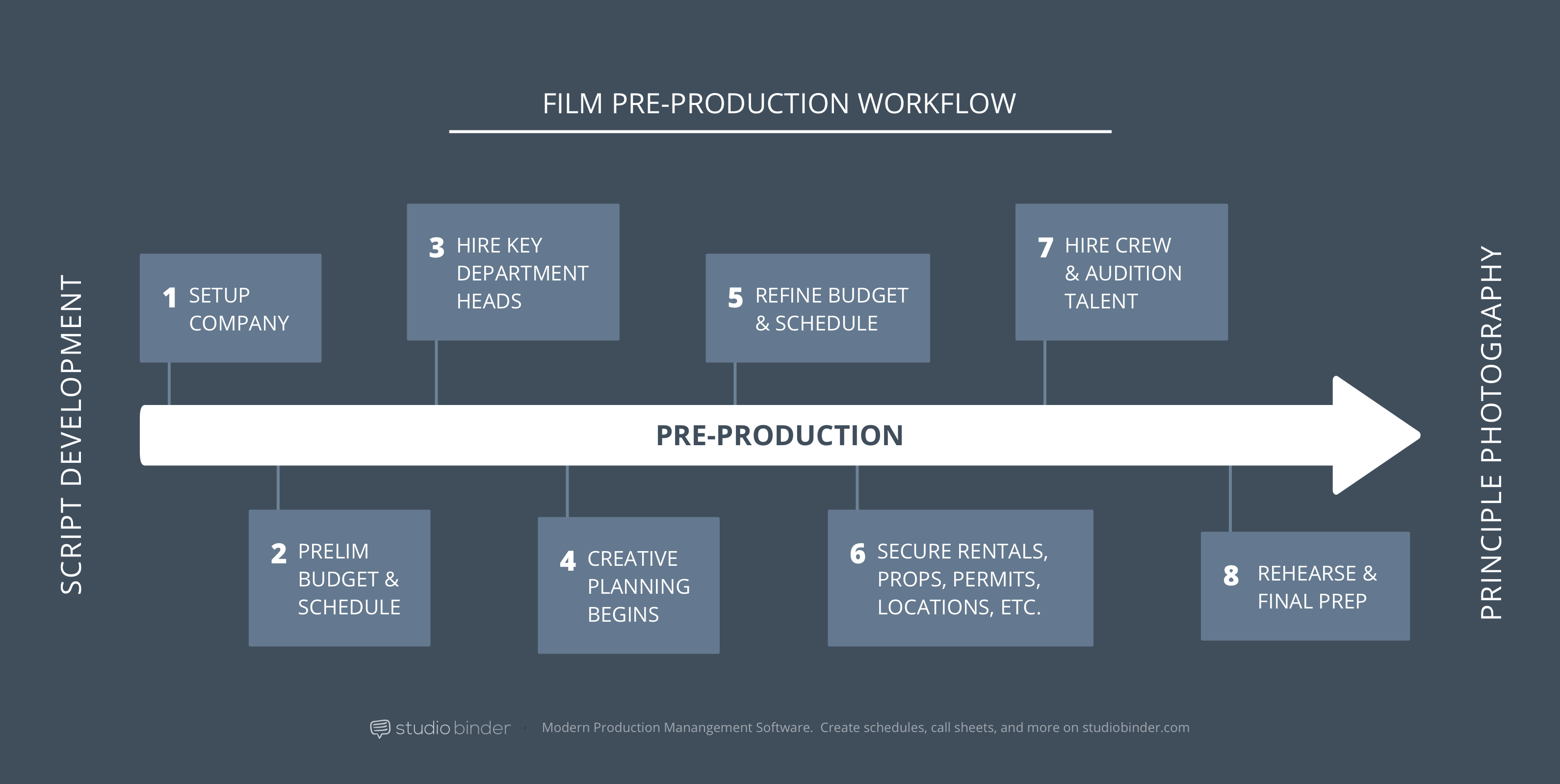
Download high-resolution chart here
There are dozens of tasks to complete during Pre-Production by various crew members. One of the key roles in the process is the 1st Assistant Director. Here's Anya Adams, 1st AD for Black-ish, walking us through a typical day on the set.
What responsibilities does a 1st AD have?
Laying the Foundation
1. Form your company
The development phase is over, and you’ve got the green-light! However, before you get to the ‘fun stuff’ like casting and location scouting, you need to lay the foundation for pre production.
Every production is like a business. Actually, in most cases, productions are businesses: formally incorporated and filed with the state.
Before you can hire anyone or secure assets, the first major check in your film pre production checklist is establishing a business foundation.
So ask yourself: will the film be produced out of a pre-existing production company like J.J. Abrams' Bad Robot? Or will you form a separate corporate entity for it (often an LLC)?

In the pre production process you set up your production company
Whatever you decide, set this up first.
Every employee you hire, every contract you sign will be done through this business entity. Once you have a business entity, you can open a bank account, deposit the production funds, retain an attorney to oversee production legal, and hire your team.
Related Posts
Prelim Film Budget & Schedule
2. Create a budget and schedule
If you’re the only person on the project, you’re probably the film’s producer. Your next step in the pre production process is to bring a line producer aboard to prepare the film’s first real budget and production schedule.
StudioBinder's Video Production Calendars
If you’re in need of a clean template for creating of preliminary budget, read our companion article Managing Your Film Budget Cashflow & PO Log.
On smaller productions, where the workload is lighter, you might choose to hire a combination Line Producer/Production Manager at this point.
If you already have a director on the project, that’s great!
It’ll only help the line producer create a more accurate preliminary production budget and production schedule.
Once this is done, you’ll know what you can afford, and will be free to move forward with additional hiring.
CREATE A PRELIMINARY PRODUCTION SCHEDULE
Once you lock your shooting script, and format correctly for scheduling software, it's time to set the schedule.
Since a shooting schedule is the bedrock of production planning, carefully assess how many scenes you can shoot per day. Since one page is equal to one minute of screen time, most productions try to shoot five pages day.
In scheduling software, like StudioBinder, your scenes are broken into page length to give you an idea of how much you're loading onto your cast and crew.
You can then drag the strips around and add day breaks.
Everything will automatically load into a schedule and call sheets.
Related Posts
BALANCE CREATIVE VS BUDGET
3. Script breakdown
With all of this new information, the line producer or production manager can revise the budget and schedule. This is a particularly tricky phase of the film/video production process, because department heads and the director might have bigger ambitions than the film can sustain.
It’s the entire team’s responsibility at to help the line producer / UPM find the balance between creative, budgetary and logistical decisions.
When fine-tuning your shooting schedule, make sure to factor in the psychology and emotion of your talent and crew into consideration.
A happy cast & crew is a more productive cast & crew. Read Pro Tips to Create a Better Production Schedule to keep momentum on set.
BUDGET YOUR BREAKDOWN
Once you've carefully sorted your script's elements into categories, it's time to assign a dollar amount to each.
A single stunt could run you into the millions, while an extra could only cost a hundred or so a day. Correctly estimating the cost of each element will give you as close a prelim budget as possible.
Our guide on How to Effectively Budget a Script Breakdown delivers a producer's insight on how much to estimate for each element.
CREATE SCRIPT BREAKDOWN SHEETS
Next, carefully comb through each page of your script and mark production elements (cast members, props, extras, stunts, etc.).
Your finalized list of all these items will make up your breakdown sheet. By tagging production elements within software, you can generate your final list.
Check out what a finished script breakdown looks like below:
But what's the difference between a prop and set dressing? For the answer, download our FREE Ebook: A Filmmaker's Guide to Script Breakdowns.
Free downloadable bonus
FREE Download
A Filmmaker's Guide to Script Breakdowns
You can't start shooting without a proper and thorough script breakdown. Download our FREE e-book to learn the in's and out's of breaking a script, categorizing elements, and generating reports. Then everything from the budget to the schedule will fall into place.
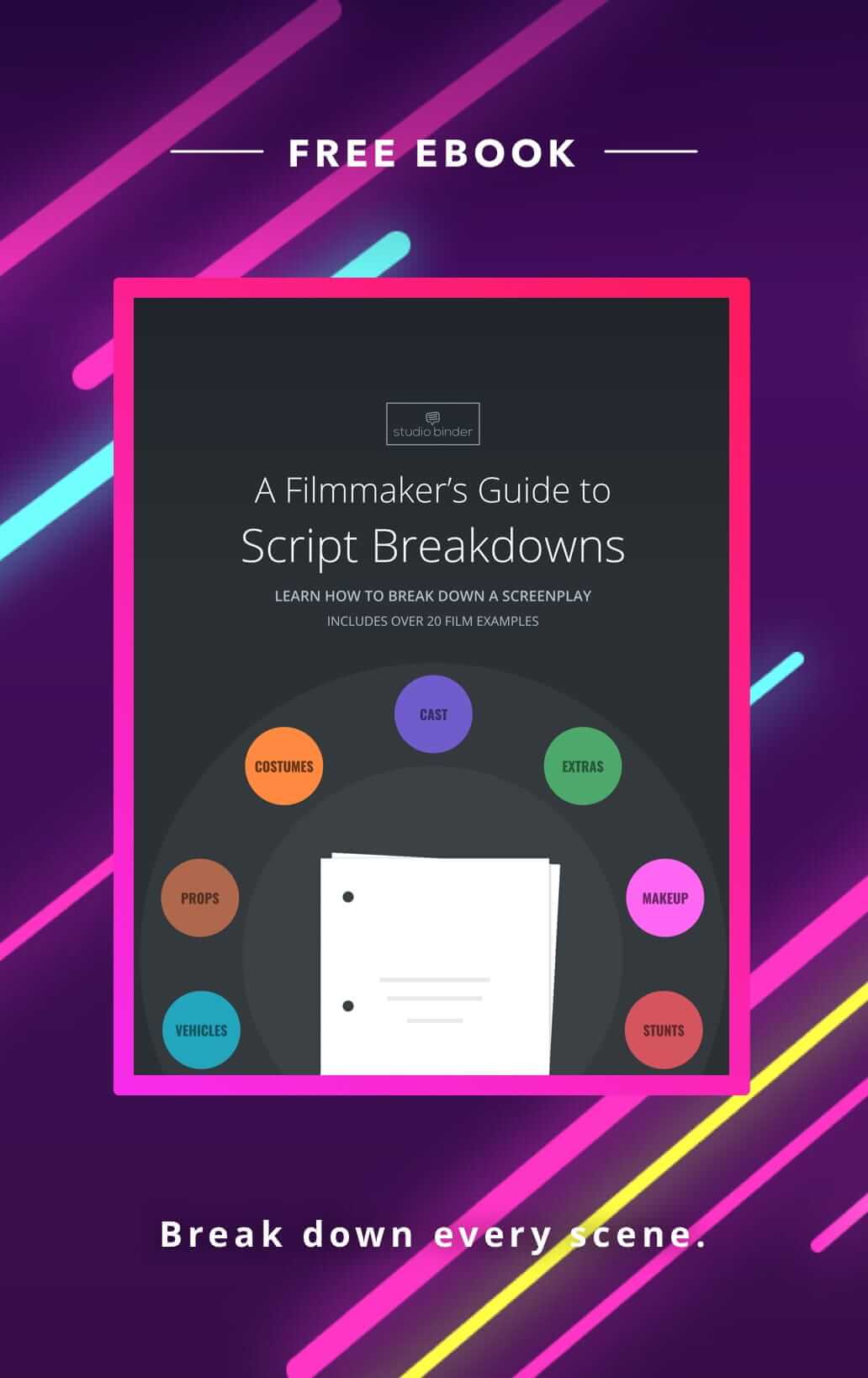
Department Keys
4. Hire key production heads
There are many people who will work on your film by the time it’s finished, but you only need a few of them at the very beginning of the pre production planning phase.
With a preliminary production budget in place, you can confidently hire more people to your team. At this point, you’ll bring aboard your director (if you haven’t already), your department heads (like your cinematographer, production designer, editor, costume designer, casting director, etc.) and, on larger projects, your production coordinator and possibly your production accountant.
Afterwards, you’ll be ready to start delegating.
Make sure your line producer or production manager is signatory to the bank account, and empower your director to begin making creative decisions with the department heads.
Tip: KEEP CONTACTS Readily Accessible
Before you know it, your production will grow from a team of few to a team of hundreds. Because of that, it's important to keep all of your contacts in a place that you can easily reach all of them at a moments notice.
Excel sheets, or production contacts software, like StudioBinder, will not only store your contacts, it will auto-populate them onto call sheets.
RENTALS, PROPS, LOCATIONS AND PERMITS
5. Locations and scouting
With the production budget and production schedule revised to everyone’s satisfaction, the next phase of the filmmaking pre production process is to get out there and secure the locations you need for your film.
Check out this video below on location scouts and tech scouts:
StudioBinder Tech Scout
Department heads and your line producer / production manager get bids on equipment, book rentals, price out props and building supplies, etc.
This is also when your location manager scouts shooting locations, and with the team’s approval, books the best options.
Creative PLanning
6. Storyboards and shot lists
With department heads in place, the director spends some time doing the creative planning.
All departments, at this point, are focused on identifying what they will need in order to accomplish the director’s vision.
They meet regularly and communicate their needs to the line producer so that the budget can be revised.
Important questions will be asked and the highest risks will be identified. Will the cinematographer need special equipment for a specific shot? Will the production designer need more time to design and build a complicated set? Now’s the time for the line producer and/or production manager to find out!
CREATE A STORYBOARD
As you brainstorm your shot list, it's not uncommon to create a detailed storyboard at the same time.
Looping in your director, DP, and team of creatives, block out your scenes into pictures. That way you can and your film producer can watch the movie ahead of time, saving you time and money to make alterations later on.
StudioBinder shot listing software allows you to add a shot description, shot number, shot type, camera angle, movement, and equipment. You can also determine framing or aspect ratio you plan to shoot in.
CREATE A SHOT LIST
Are you going to shoot a scene from a drone? Do a Birdman-esque one-take?
Your shooting schedule isn't complete until you determine how you will shoot each scene. As you generate your shot list, you tack on more elements (denoted "special equipment") you'll need for the production.
How to Build a Shot List
Whether you're using software or going by hand, make sure to group your shots (by color like I did below) so that when you get to shoot you can easily communicate what setups are needed and how you'll get all of your shots.
Related Posts
Pro Tip: Book Locations Early
Don’t forget to secure your location permits early in the pre production process! Some municipalities can take a few weeks to process permit applications.
This is a good time to work on product placement deals, and to secure insurance, too. Use a location scout release form to make sure you get all the signatures.
CREATIVE PLANNING
7. Production design
Whether your shoot requires mostly working on sound stages or location shooting, production design covers it all. The Production Designer is the head of the Art Department. Along with the Cinematographer, they are in charge of creating and capturing the visuals in a film. In other words, these are important jobs during pre-production.
Production Design 101
Crew & Casting
8. Casting and rehearsals
While all this is going on, your team will grow.
Departments will fill their ranks with additional crew, and the casting director will bring in auditions. Now’s when you sign union agreements and contracts so you can employ union members on your production. Your production coordinator will be kept busy sorting through the paperwork load, so don’t forget to be extra-nice!
By the end of this stage, you should have secured your cast, crew, production staff, key locations, and the tools to produce the movie (or, at least, everything will be booked and on the calendar).
Make sure you use casting sheet templates at your casting call, so you don't lose any information going forward.
Related Posts
SENDING OUT YOUR CALL SHEETS
The last step of pre production is sending out call sheets.
Your call sheet lets your talent and crew know when they should be on-set, and what's the schedule for the day.
In many ways, creating a call sheet is the capstone of pre production--it uses all the information you've collected throughout this entire process.
To prep your call sheet, use our free template here.
Testing Testing 123
9. Camera prep and equipment
During pre-production, the cinematographer has the opportunity to decide the overall look of the imagery. They might want to shoot with low key lighting or find camera lenses that will best suit the material.
Ultimate Guide to Camera Lenses • Subscribe on YouTube
Legalities
10. Permits and insurance
Unless you're running around shooting guerrilla style, you're going to need film permits to shoot in a location and insurance to cover yourself in case of any number of problem scenarios.
How to Get a Film Permit (And Why You Should)
As you can see, there is a lot of work that goes into Pre-Production. Look at it this way, the more work you put into this stage will help ensure that your production goes as smoothly as possible. Problem solving ahead of time is acceptable — waiting until you're on set is not.
That's why production management software becomes an invaluable tool. Keeping everything centralized and organized in StudioBinder Production Management Software is the key to a successful shoot.
StudioBinder production software • Subscribe on YouTube
PRODUCTION PHASE BEGINS
When does Pre-Production end?
Completing this stage means the cameras are ready to roll. You've cast your actors; permits for locations have been secured; you've hired the crew and arranged for equipment rentals.
Pre-Production is an essential stage of any project and it will help the actual production go as smoothly as possible. For a more detailed explanation of the steps involved, our next article covers those topics and includes a free Pre-Production checklist.
Related Posts
Up Next
Pre-Production checklist
Now that you’ve laid the foundation, let’s get into each steps in detail. The next post describes the various steps in the pre-pro stage, including locking the script, storyboarding, obtaining permits and insurance, and hiring the crew. You'll also find a FREE pre-pro checklist to make sure your next project stays organized and productive.
Up Next: The Ultimate Pre-Pro Checklist →
Project management for video creatives. Tasks, file sharing, calendars and more.
Manage video production timelines, tasks, storyboards, shot lists, breakdowns, call sheets. Made for video creatives, new media and film.
